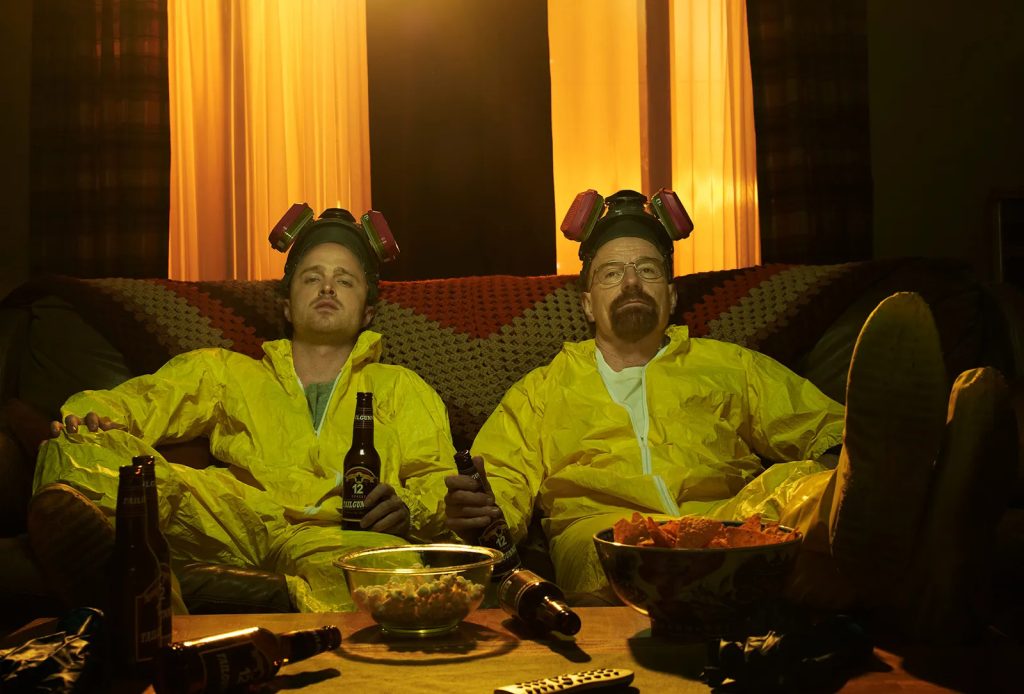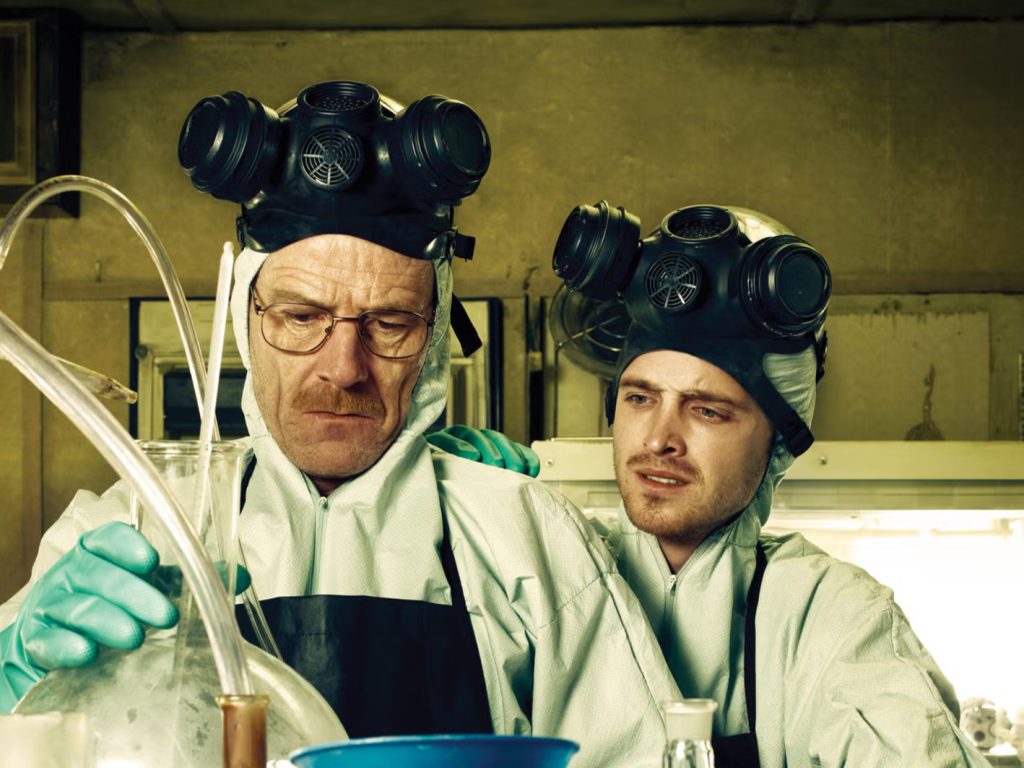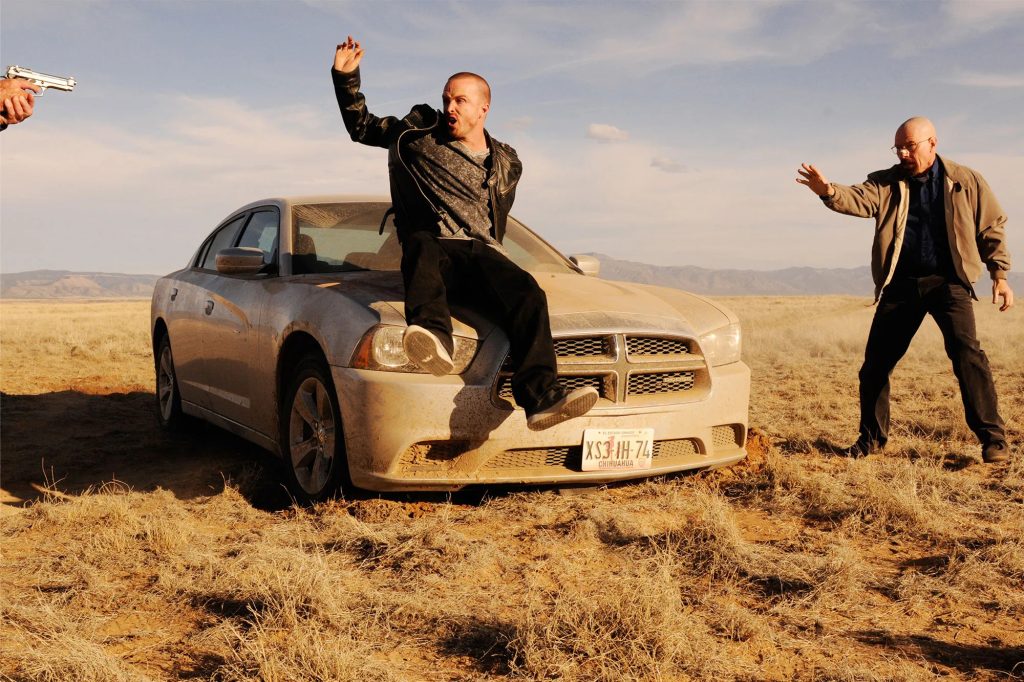Breaking Bad came at the perfect juncture between the television network era and the binge-watching model on streaming service platforms. Vince Gilligan’s show about Mr. Chips turning into Scarface became such an indomitable phenomenon that it was ranked as one of the greatest television series of all time.

Yet in the beginning, not everything about Breaking Bad was as it seemed. The original blueprints for the story would not have made the series sustainable beyond its Season 1 narrative. The timeline regarding the watershed moments in the series was completely off and character arcs abruptly changed course without proper incentive or catalyst.
However, a major incident that rocked Hollywood solved all of the “glitches” in Vince Gilligan’s story.
The Writers’ Strike Saved Breaking Bad

Breaking Bad Season 1, when it debuted in January of 2008, began a journey with two men coming together, both about to change the other’s life forever, and setting themselves on a path of utter self-destruction and revelations. Until Vince Gilligan decided to kill one off by the end of the first season.
That was supposed to be Jesse Pinkman’s fate, the beloved character who grew on the audience with each passing season and stood beside Walter White all through his transformation from Mr. Chips to Scarface, or in this case, Heisenberg. The writers’ strike of 2008-09 was in part responsible for saving Aaron Paul‘s arc (and his career), along with a lot of other things within the Breaking Bad saga.
As Hollywood changed under the shadow of the writers’ strike, so did the storyline for the series from its originally charted path into something completely different. It was not in the cards for Walter White to evolve slowly into the criminal madman he later became. It was also not in the cards for Season 1 to end where it did in the final televised version.
The pause that the strike offered gave Vince Gilligan some leeway to shift the story as it developed into a more sustainable model. In the end, this change helped keep the plot growing instead of stagnating and the seasons more interesting instead of running in the same circle over and over again.
Breaking Bad Season 1 Veers Off the Set Path

Vince Gilligan wanted to end Breaking Bad Season 1 in a grand ole twist. Bryan Cranston‘s Walter White was supposed to complete his transformation into Heisenberg over the course of two lengthy season finales. Each season that followed thereafter would only be a continuation of Heisenberg’s criminal conquests instead of the now-infamous full-bodied arc that finds him evolving slowly into a criminal mastermind as a product of time and circumstance.
Gilligan later clarified the changes he made to the story arc in an interview with Creative Screenwriting [via Mental Floss]. Not knowing how the series would be perceived by the fans at first, the series creator thought the best approach was to lean into the more sensational aspects of the plot and end Season 1 with Walter’s big transition. Time and patience taught him otherwise:
You want to really keep the show exciting and interesting and keep ’em watching. All of that to say that those last two episodes, because of that, would have been really big episodes, and would have taken the characters into a hugely different realm than that they were already in, and it would have been a hard thing to come back from, coming into season two.
But that was not all that Gilligan wanted to change in terms of storytelling. On top of holding Walter White’s transformation as bait for later seasons, the series creator also slowed down the story’s pace entirely going into Season 2.
We’re not just doing those two episodes coming into season two. We threw those out completely and we’re starting somewhere else. We’re building more slowly than we otherwise would have built. I think that’s really good, because I know we’ve all had our favorite shows that were really interesting up to a certain point, but maybe they just go too far, and then there’s no going back from it.
To me, the trick is to do as little as possible with the characters, and yet keep them as interesting as possible. It’s a real balancing act.
Gilligan was right, of course, in diagnosing how the slow build-up of the plot instead of a show-and-tell in the first season itself would help Breaking Bad in the long run. The series went on to be a hit through word-of-mouth and the timely arrival of Netflix.
In hindsight, Breaking Bad became a success for a lot of different things, the binge-watching model, the deranged plot twists, the original concept that had never been tried before – but most of all, it was the writers’ strike that tied all the disjointed pieces together and made it into a masterpiece that we all know and love today.
Breaking Bad is streaming on Netflix.

